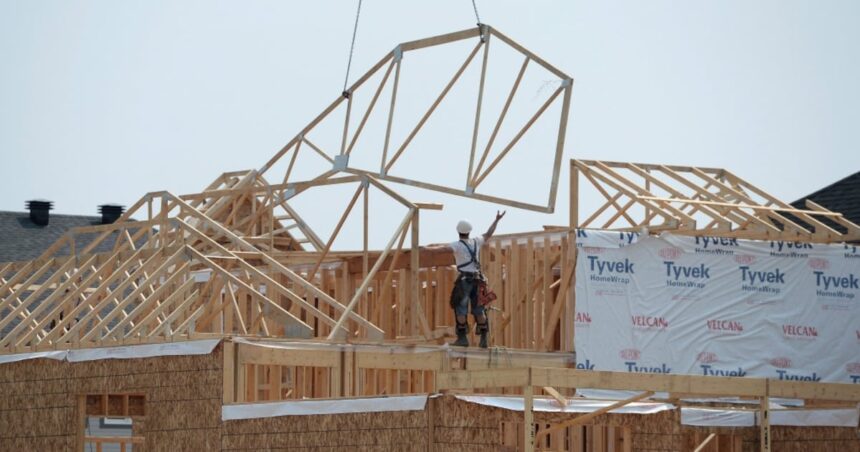In the crisp autumn air of Whitehorse last week, Elder Margaret Smith stood before a crowd gathered outside a newly completed six-unit housing complex. “Our people have waited generations for the dignity of safe homes,” she said, her voice carrying across the attentive faces of community members and officials alike. “This isn’t just about buildings—it’s about healing.”
The scene in Yukon represents a small victory in what has been a decades-long crisis. Indigenous communities across Canada have faced severe housing shortages, with many homes plagued by mold, structural damage, and overcrowding. Now, a bold new financial initiative aims to change this persistent reality.
The First Nations Housing Trust, launched yesterday with $350 million in initial funding, represents Canada’s most ambitious attempt yet to address Indigenous housing through private-public partnership. The fund brings together capital from five major banks, federal contributions, and Indigenous governance oversight in what supporters call a “watershed moment” for addressing housing inequality.
“We’ve spent years studying government housing programs that ultimately failed to close the gap,” says Jennifer Whitecalf, Executive Director of the newly formed trust. “What makes this different is that communities themselves determine where and how these dollars get spent.”
According to Indigenous Services Canada, the housing deficit in First Nations communities alone exceeds 85,000 units nationwide. Many existing homes require major repairs, with waiting lists for housing stretching years in some communities.
The housing crisis touches virtually every aspect of Indigenous well-being. In my conversations with healthcare workers in Northern Manitoba last month, they described treating children with chronic respiratory conditions linked directly to mold exposure. School principals report attendance problems when students lack stable housing. Employment opportunities vanish when workers have nowhere to live.
Jason Montour, Chief of Pine Creek First Nation in Manitoba, put it bluntly during our phone conversation yesterday: “You can’t talk about reconciliation while people are living ten to a house with black mold on the walls.“
The new fund operates differently than previous federal programs. Rather than flowing through departmental channels, money will be administered by a board with majority Indigenous representation. Communities can apply for low-interest construction loans, mortgage guarantees, or repair grants based on their specific needs.
Critics note that $350 million, while significant, represents just a fraction of what’s needed to close the housing gap. Assembly of First Nations estimates place the true cost closer to $5 billion. Conservative housing critic James Roberts questioned whether the initiative goes far enough, calling it “a drop in the bucket compared to the ocean of need.”
Yet supporters point to the fund’s innovative structure as its true strength. By leveraging initial government capital against private investment, the trust aims to grow to over $1 billion within five years.
“This isn’t just another announcement,” explains Dr. Heather Martin, housing policy researcher at the University of British Columbia. “The revolving loan structure means communities can build equity and reinvest in more housing. It’s potentially self-sustaining in ways previous programs weren’t.”
Statistics Canada data shows Indigenous Peoples represent approximately 5% of Canada’s population but make up nearly 30% of the country’s homeless population. The disparity grows even starker in urban centers like Winnipeg and Vancouver.
Walking through Winnipeg’s North End neighborhood with community advocate Joseph Bear last winter revealed the urban dimension of the crisis. “Young people come to the city for education or jobs, but housing discrimination and high rents push them into dangerous situations,” Bear explained as we passed crowded rooming houses. “Then politicians wonder why we have other social problems.”
The housing fund arrives against a backdrop of heightened tensions around reconciliation efforts. Last month’s heated parliamentary exchange over the pace of boil-water advisory resolutions highlighted continued frustration with the government’s implementation of promised Indigenous reforms.
Housing Minister Caroline Blackwell, speaking at yesterday’s announcement in Ottawa, acknowledged past shortcomings. “We recognize that previous approaches haven’t delivered the results our Indigenous partners deserved,” she said. “This fund represents a fundamental shift in how we approach housing sovereignty.”
Several Indigenous developers have already expressed interest in the fund. Thunderbird Construction, an Anishinaabe-owned company in Northern Ontario, plans to apply for financing to build 24 energy-efficient homes in three communities.
“We’ve had plans ready for years,” explains company president William Moose. “The bottleneck was always financing. Banks wouldn’t lend without government guarantees, and government funding came with too many strings attached.”
The fund’s launch hasn’t been without controversy. Some Indigenous leaders question whether private sector involvement might eventually prioritize profitability over community needs. Others worry urban Indigenous housing challenges might be overlooked in favor of on-reserve projects.
“We need to watch this closely,” cautions Métis housing advocate Danielle Lavallee. “The governance structure and community control are promising, but we’ve seen good intentions falter before.”
Back in Whitehorse, as Elder Smith concluded her remarks, she expressed cautious optimism. “We’ve heard big promises before,” she told me afterward, watching families tour their new homes. “But having our own people at the table making decisions—that gives me hope this time might be different.”
For the thousands of Indigenous families currently on housing waitlists across Canada, that hope can’t materialize into actual homes soon enough.






